A gym ball adds a fun and versatile element to a fitness routine. In fact, this large, inflatable sphere offers countless benefits for:
- core strengthening
- improving balance
- enhancing flexibility
But when using one, safety is paramount. In this guide, we’ll give you a better understanding of this workout must-have. These tips and techniques will help you maximise the effectiveness of your regimen. Let’s get started!
Gym Ball Explained
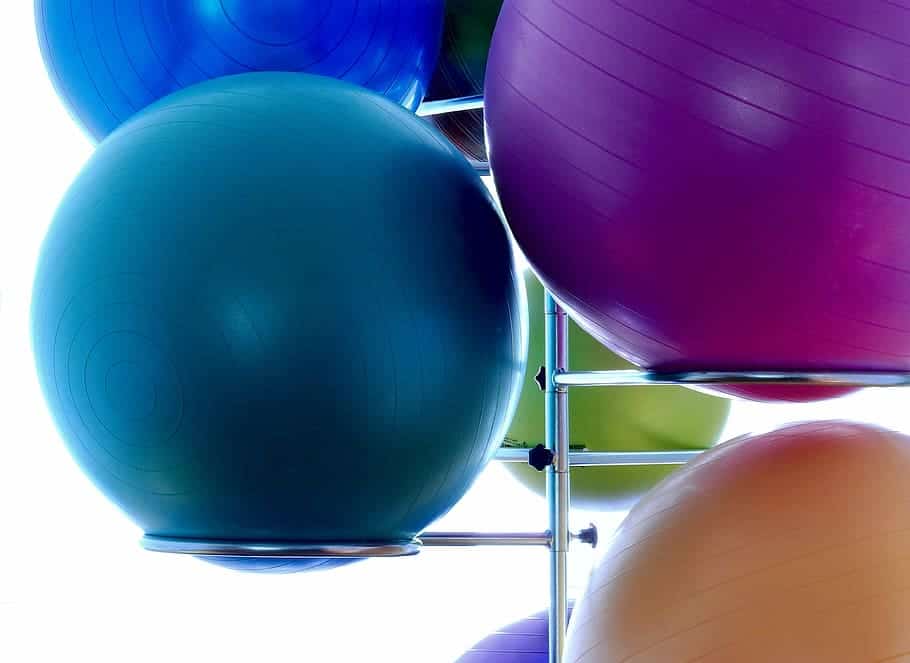 (Image Credit: Wallpaper Flare)
(Image Credit: Wallpaper Flare)
When it comes to versatile and effective fitness equipment, few things can match the gym ball. This inflatable sphere offers a multitude of benefits for enhancing your workouts.
Gym balls are large, lightweight balls typically made of durable, anti-burst material. Available in various sizes, it can suit users of different heights and fitness levels.
Selecting the right size ensures a safe and comfortable workout experience. As a general rule, choose a ball that allows your knees to be at a 90-degree angle when seated on it.
High-quality gym balls are typically constructed from materials like PVC or rubber. Such a feature guarantees durability and stability during exercises.
Preparing for Safe Use
Before you begin your gym or swiss ball workout, take a few moments to prepare the workout area. Here are some important steps to follow:
First, ensure that the area around you is clear of any sharp objects or obstacles that may pose a risk of injury. This includes removing furniture or potential hazards that could interfere with your movements.
Next, properly inflate the gym ball. Overinflating can increase the risk of it bursting. In contrast, underinflation may lead to instability during exercises. To achieve the optimal inflation level, refer to the manufacturer’s guidelines. Typically, the ball should feel firm and provide slight give when pressed with your hands.
Additionally, select a suitable exercise surface. An even, non-slip surface, such as a yoga mat or a carpeted area, is ideal for stability and grip. Avoid using the gym ball on surfaces like concrete or hardwood floors. For one, they may cause the ball to slide or puncture.
Now, let’s move on to understanding the essential safety measures.
Essential Safety Measures
Wear appropriate workout attire and footwear for safety and comfort. Opt for comfortable, breathable clothing that allows a full range of motion. Avoid loose or baggy clothing that could get caught in the ball or impede your movements. Go for athletic shoes that provide stability and traction to prevent slips or falls.
Maintain proper posture and alignment for effective and safe workouts. Focus on keeping your spine neutral, shoulders relaxed, and core engaged. Improper posture can increase the risk of strain or injury. If needed, seek guidance from a fitness professional to ensure the correct form.
For a stable base on the gym ball, position your feet hip-width apart and distribute your weight evenly. This helps improve balance and control during exercises. Finding the right level of ball inflation is also crucial. Generally, the ball should have a slight give when seated or lying on it. Adjust the inflation as needed to suit the specific exercise and your comfort level.
Core Exercises with a Gym Ball
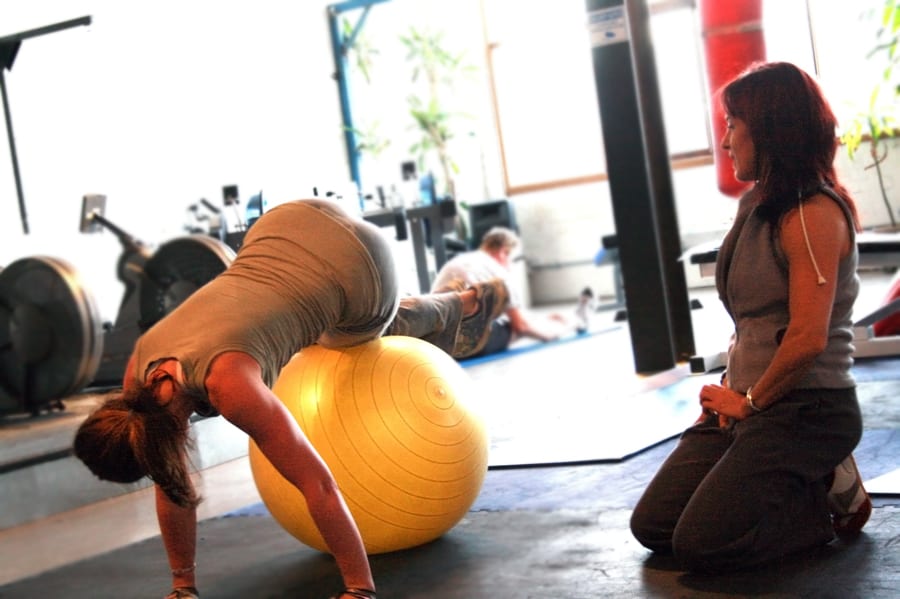 (Image Credit: Wikimedia Commons)
(Image Credit: Wikimedia Commons)
To kickstart your gym ball workout routine, check out a few beginner-friendly core exercises:
1. Stability ball crunches
- Sit on the gym ball with your feet planted firmly on the ground.
- Walk your feet forward, allowing the ball to roll underneath your lower back.
- Cross your arms over your chest or place them behind your head.
- Engage your core and slowly lift your upper body.
- Pause for a moment and then lower yourself back down with control.
2. Pelvic tilts
- Lie on your back with your feet resting on the gym ball and knees bent.
- Place your arms by your sides for support.
- Gently contract your abdominal muscles. Tilt your pelvis upward and press your lower back into the ball.
- Hold for a few seconds, then release the tilt and return to the starting position.
- Repeat the movement, focusing on maintaining control and engaging your core muscles throughout.
3. Ball crunches
- Lie back on the gym ball with your feet flat on the floor and knees bent.
- Walk your feet forward, rolling the ball underneath your lower back.
- Place your hands lightly behind your head or across your chest.
- Engage your core and lift your upper body. Use your abdominal muscles to curl your shoulders towards your hips.
- Pause at the top of the movement and slowly lower yourself back down with control.
Safety Tips
Consider using a spotter, especially for exercises that involve balancing or core strength. A spotter can provide support if needed, reducing the risk of falls or accidents.
Gradually increasing the difficulty of exercises is also crucial for safety. Avoid rushing into advanced movements before mastering the foundational exercises. Challenge yourself by incorporating progressions. This can include adding resistance or increasing the range of motion.
Unsure about proper form, technique, or any pre-existing conditions? It’s advisable to consult a fitness professional. They can assess your abilities and tailor a workout program to your specific needs.


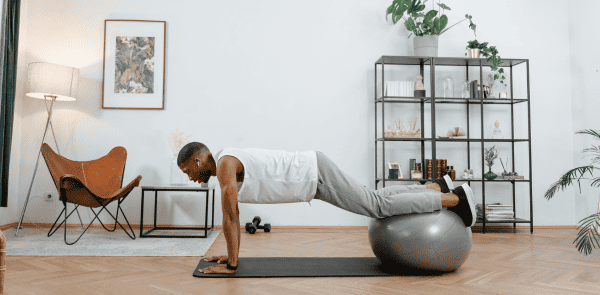
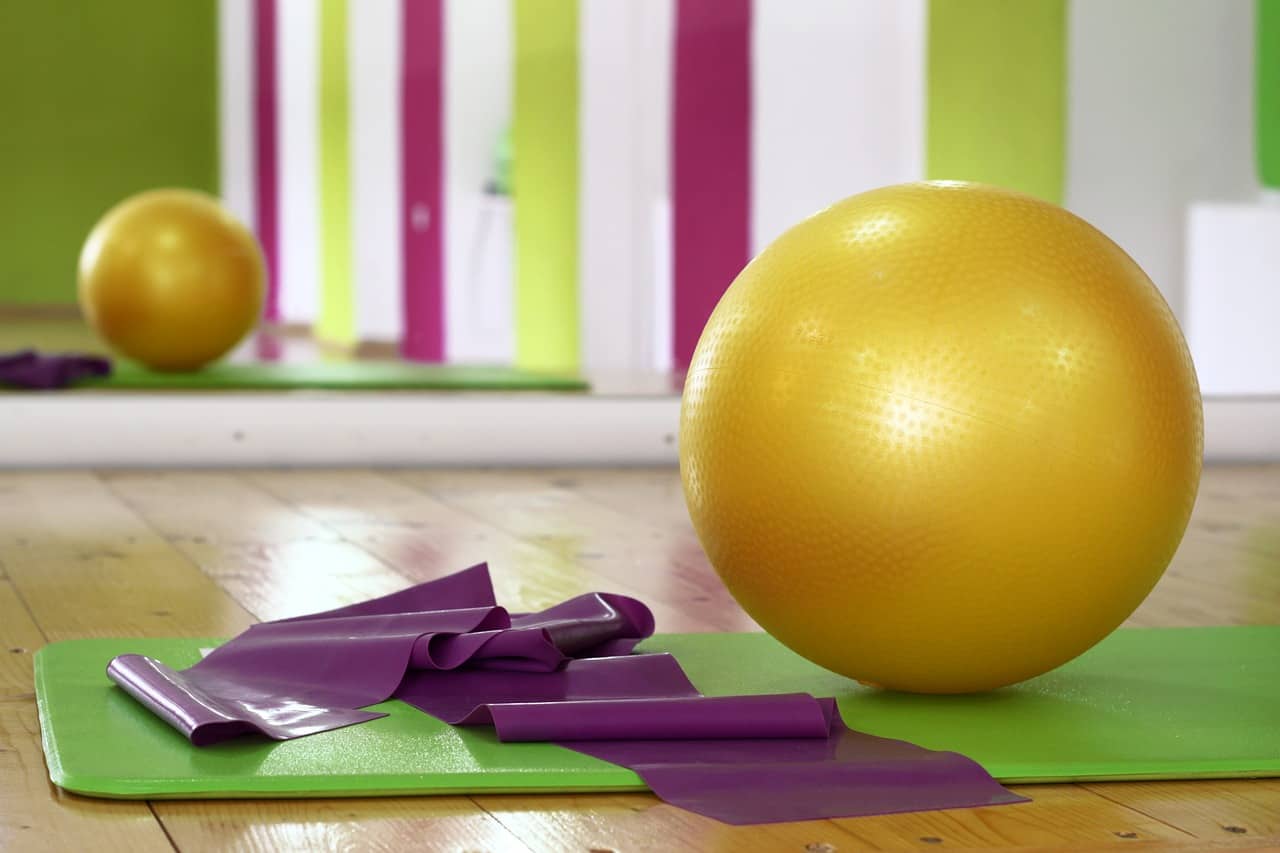 (
(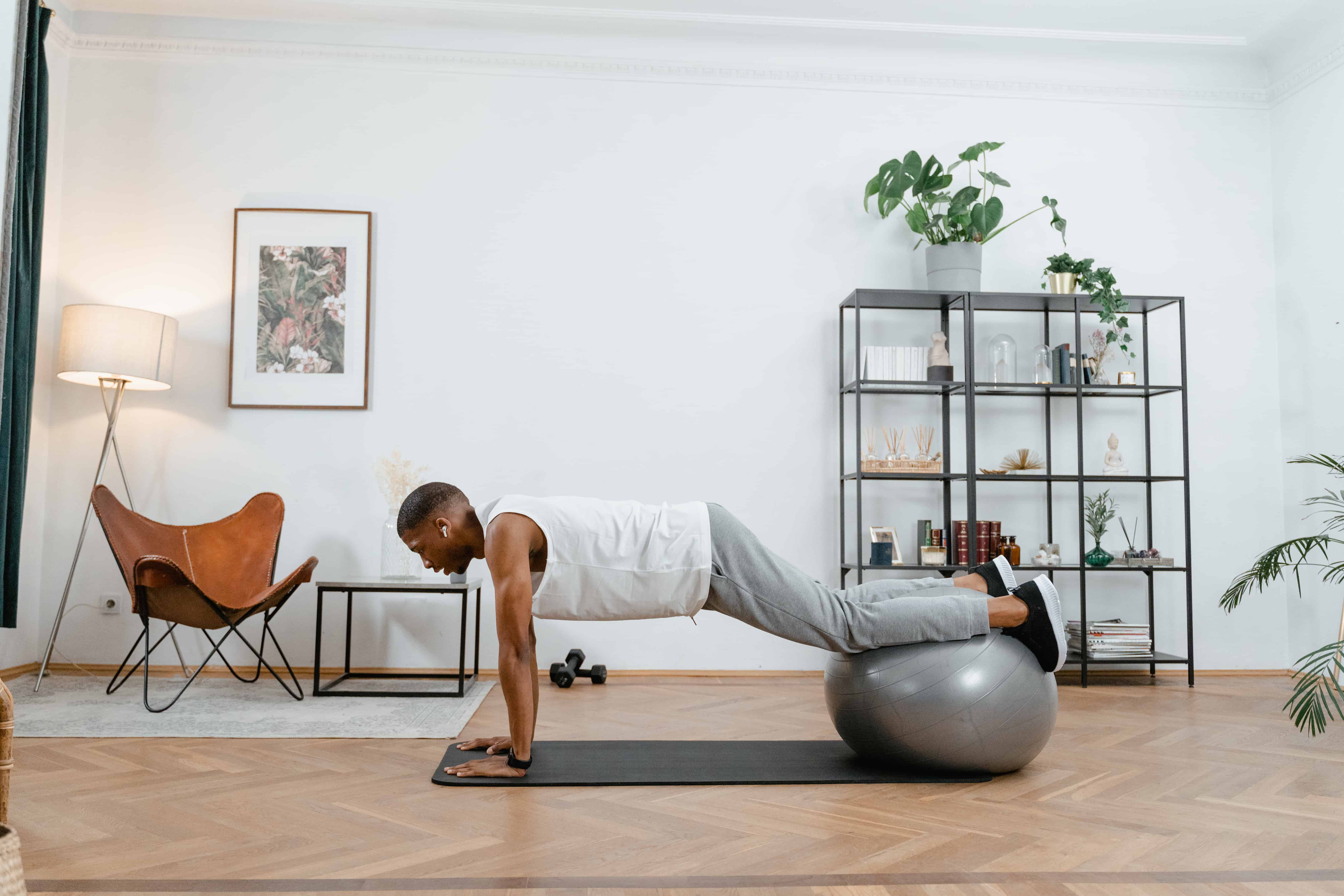 (
(